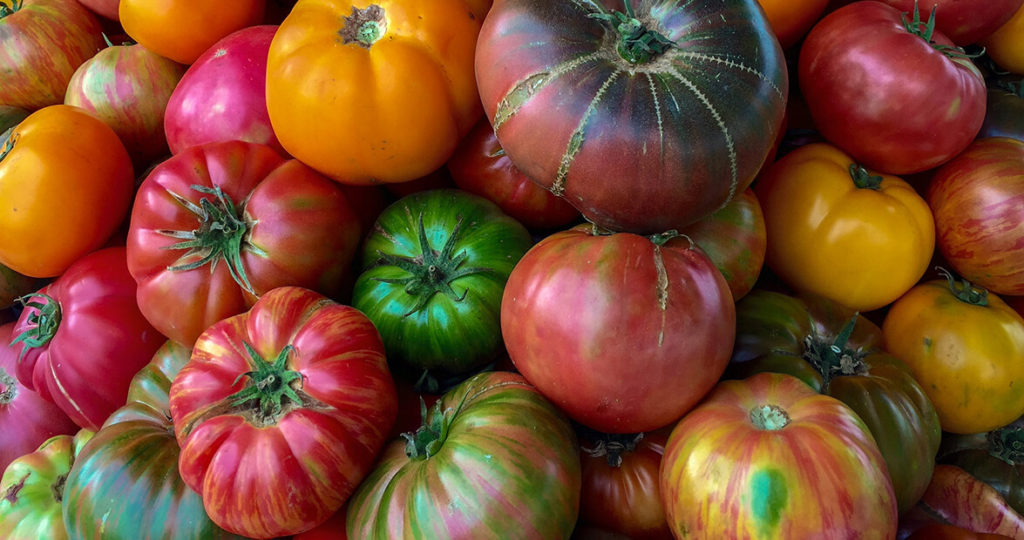
Heirloom tomatoes, taste amazing, look amazing
From hummus desserts and motherless meat to mainstreaming marijuana and middle-aged waitresses, these are just some of the food and restaurant trends forecast for 2019. Ingrid Shevlin reports
Just when you resigned yourself to the fact that kale is the new spinach or that some obscure South American vegetable (which is never going to hit our shop shelves, anyway) is the latest superfood, it all changes. Out goes coconut water, in comes cactus water. Out goes perfect fruit, in comes ugly fruit. Margarine is so 2017, so welcome back real butter. Bone broth becomes the latest panacea of all ills and more and more Japanese food is thrilling Western tastebuds. Shrewd Food trawled through publications and websites to find out what’s in store for 2019. So, below, are the trends you should be following this year, failing which you can at least sound intelligent at the dinner table when someone raves on about Nigella seeds – and, no, they have nothing to do with Nigella Lawson.
But there is one prevailing theme thoughout the new trends: The rise of vegetarianism. This means the demand for tasty plant-based meat substitutes continues to grow (Woolworths has just bought out a range of plant-based meat substitutes) and lab-grown, motherless meat is just around the corner. Say goodbye to the braai and help save our planet.
(Some of the information has been quoted directly from these, largely international, websites and publications and some items have been substantially reworded with added information to give some local context and info).
FROM FINEDININGLOVERS.COM
♣ Subtle smoke: “It’s nothing new, we get it. But we’re not talking BBQ, or huge smokers out in the back, we’re talking about the subtle use of smoke as a flavor alongside sweet, sour, salty, spice, spicy and bitter. We’ve noticed this more and more throughout 2018: a beetroot made much sweeter and less earthy thanks to a wonderful hit of smoke, an amazing smokey ceviche thanks to charred bok choy blended into the sauce. Subtle smoke is one of the most underrated and underused flavors around – perhaps because it’s just so easy to go too far. Expect more chefs to start to control and elevate this much underused flavour.”
MasterChef Australia can’t be wrong.
♣ Butters are back: “Butter seems to come and go with the tides of fad diets. But we’re personally noticing a new focus on butter, homemade butter and interesting varieties of butter to be used as ingredients in the kitchen rather than a side accompaniment for bread. Herb butters, fermented butter, brown butter, miso butter, nut butter – using this very fatty, very flavorful hits to cook ingredients like vegetables or to add new depth to stews or soups is something expected to continue.”

Vegetables, the new meat?
♣ Vegetables: “Every year since 1993 has been the year of the vegetable, but let us explain why 2019 really is veggie time. More and more people are opting for veg-free days, whether it’s for Meatless Monday, for health benefits or because people are realizing the impact meat has on the planet. Perhaps it’s because of what Annenberg University in Pennsylvania called the 25% Tipping Point in one of their recent studies: the idea that the minority of people who choose vegetarian diets is now getting large enough to effect the choices of the majority. Restaurants are certainly playing the game – French chef Alain Ducasse went full vegetarian a while back, more and more veg tasting menus are appearing with beetroots, celeriac, salsify, artichokes and fennel all having a resurgence on menus.”
TASTE MAGAZINE’S JAN/FEB ISSUE
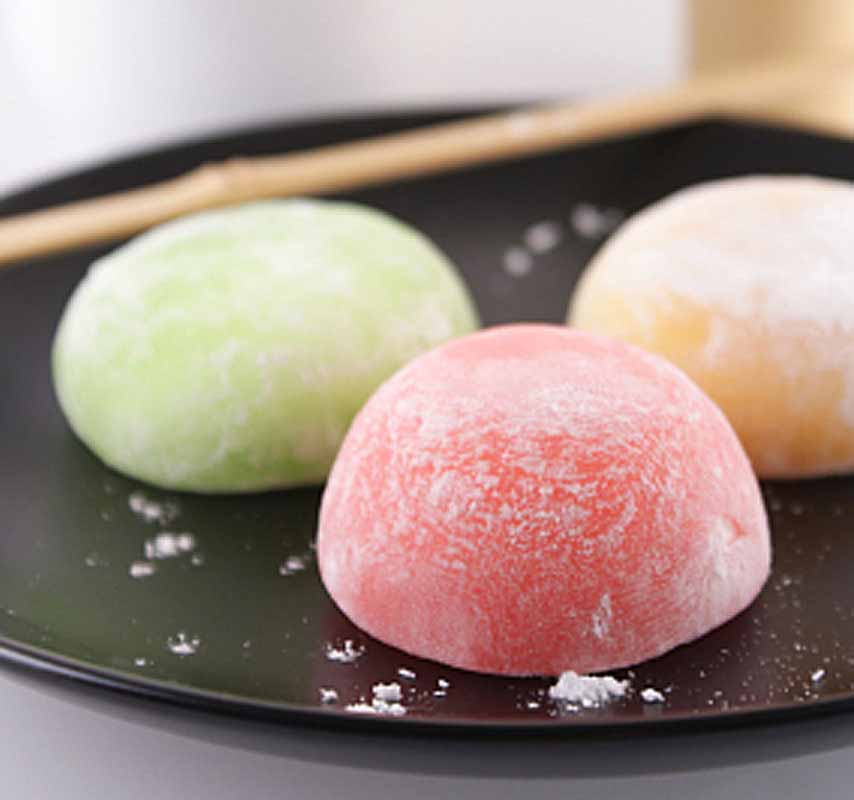
Mochia, a Japanese dessert
♦ Mochia: According to Taste, this is a Japanese dessert “using sweet glutinous rice four and baking powder, mixed with sugar and coconut milk and then baked in the oven. It’s can be coloured with matcha (powdered green tea) or other edible dyes and wrapped around a sweet centre, such as red bean paste, to form bite-sized treats.” Apparently you can buy them already in Cape Town – no surprises there.
♦ Green mango: Generally used in Thai and Indian cooking (green mango chutney and kacchi kauri, a raw mango syrup), so this is not exotic to us in Durban. Taste magazine suggests you “slice the green mango thinly and serve with dressing as a side with Thai curries”. Taste offers a “dressing of lime, turmeric, fish sauce, palm sugar and ghee”.
♦ Heirloom tomatoes: The seeds are what make an heirloom tomato an heirloom tomato. They are passed down from season to season, taken by the farmers from the tomato plants that produce the best fruit. Heirloom tomatoes are also often open-pollinated, which means that they are pollinated naturally by birds, insects, wind, or human hands. And they are supposed to taste better. And they do. Much, much better.
Woolworths sells them, but the best heirloom tomatoes I’ve ever tasted were grown by Steve Haskins, a local Durban businessman who grows them as a hobby and supplies restaurants. He reports a good crop this year, although not much left for public sales. But you can email him on secrtsox@iafrica.com
♦ Nigella (sativa) seeds: This is an annual flowering plant in the family Ranunculaceae, native to south and southwest Asia. Its tiny black seeds are slightly bitter with a similar pungency to onions. Sprinkle over veggies like carrots, as well as tomatoes, eggs or cheese dishes. Apparently good with ruby chocolate, too, if you can get hold of ruby chocolate, that is. According to a Google source, Nigella seeds have “an oregano-like quality with herbaceous notes, a slight bitterness and a warm, toasted-onion flavour. They can be added whole to salads, sauces and even soups at the last minute just before serving. They are a great replacement for sesame seeds without the sweet element.”
Now, all I need to do is find some. No luck so far.

Gina Neilson, the face behind Dr Broth
♦ Bone Broth: Bone broth is the latest panacea of all ills. Not all, actually, but it does seem to have some surprising health benefits for what is, essentially, stock. Bone broth is basically the result of a very long and slow cooking process involving chicken or meat bones, herbs, vegetables and apple cider vinegar. The slow cooking process extracts health-giving gelatine and minerals from the bones. Generally it’s used in soups or casseroles, but can also be drunk as a health drink.
Gina Neilson of 9th Avenue Bistro, Durban, is a passionate proponent of bone broth and its benefits. She produces a range called Dr Broth, which is made the traditional way and is packed with flavour and health-promoting ingredients. They use only organic and hormone-free bones, as well as turmeric, ginger, thyme, coriander, rosemary, garlic and more. The broth has “anti-inflammatory and antioxidant properties, and can help to boost your immune system, aid weight loss, and reduce overall inflammation”, according to the Dr Broth website. To find out more about Dr Both click onto https://www.drbroth.co.za
They also have a Facebook page, Dr Broth. It’s lovely (the broth). I’ve tried it.
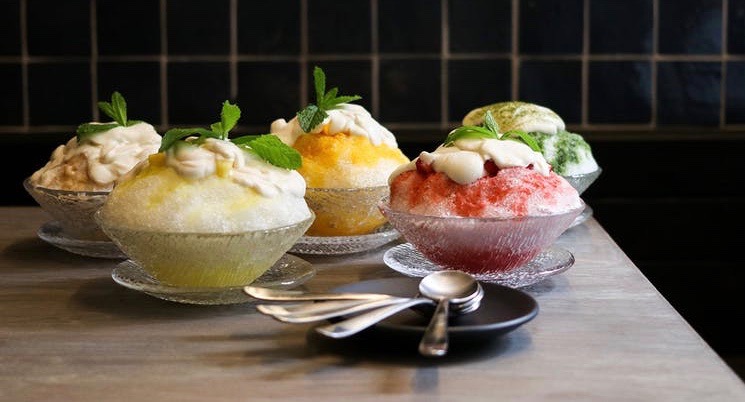
Shave ice, a Japanese-style dessert
♦ Shave Ice. Another Japanese-style dessert which is dairy free and vegan and also called kakigori. It’s basically “ice shavings flavored with syrup, a sweetener and condensed milk. Flavours include raspberry and pineapple, watermelon, mango and green tea. Think coconut lime crunch. It can be be topped with red bean paste.”
FROM WOMEN’S HEALTH MAG
♣ Seed Butter: “Peanut, almond and cashew butters have been buzzy for years and, while seed butters like sunflower and tahini are not new, keep an eye out for pumpkin, and watermelon seed butters, which share the same good fat profile of nut butters, but offer an alternative for those with nut allergies. Stick to bands made with just seeds and sea salt – with no sugar added.”
♣ Ugly food will shine: “Food companies have long been in the habit of trashing ingredients that aren’t pretty enough to sell, but consumers are becoming more environmentally-conscious. The battle against food waste isn’t new. Chef Dan Barber’s wasteED campaign encourages the use of food scraps and ‘ugly’ produce in restaurants. Also plenty of farmers and merchants outside the big supermarket chains have never been shy about selling misshapen goods. But it’ll gain even more momentum in 2019.”
Read more about the wasteEd campaign below. In the meantime visit The Veggie Shop, at the Mushroom Farm in Hillcrest (next to the Hillcrest Hospital). The Veggie Shop gets as close to fully organic as possible. Everything they sell is either ethically reared or grown or an artisanal food product. There’s also raw milk, yoghurts, jersey cream, homemade jams, bone broth, baked sweet treats, herbs, some banting products and more. And, while their products don’t look ugly, they have a low carbon footprint. Lovely, lovely shop.
Call 031 768 1877.
♣ Harissa will be in everyone’s pantry: “No need to get rid of your poultry seasoning and ground cumin, but make room for flavour-packed seasonings like harissa, berbere, dukkah, and ras el hanout, all of which are heavily used in North African cuisine. Harissa – a slightly spicy paste made with red pepper, tomato, chili, and a few other spices and aromatics – is easy to swap for tomato paste in almost any recipe, and packs a similar nutritional punch.”
I found a delicious version of dukkah produced by Soefija’s in Paarl, which I bought in Pretoria. Have never seen this brand in Durban, but click onto www.soefijas.co.za for more info. Otherwise you should be able to buy these spices from Food Lovers Market or the Spice Emporium.
♣ Coconut water bites the dust: “For years, coconut water has been marketed (to great success) as a hydration miracle, hangover cure, and all-around delicious alternative to regular old water. In 2019, look out for other alternative waters to take over the cooler. In particular, maple water, which contains less than half of the sugar of coconut water, as well as cactus water, which is promoted for skin revitalisation.
While these slightly sweet waters won’t hurt you, water is still best.”
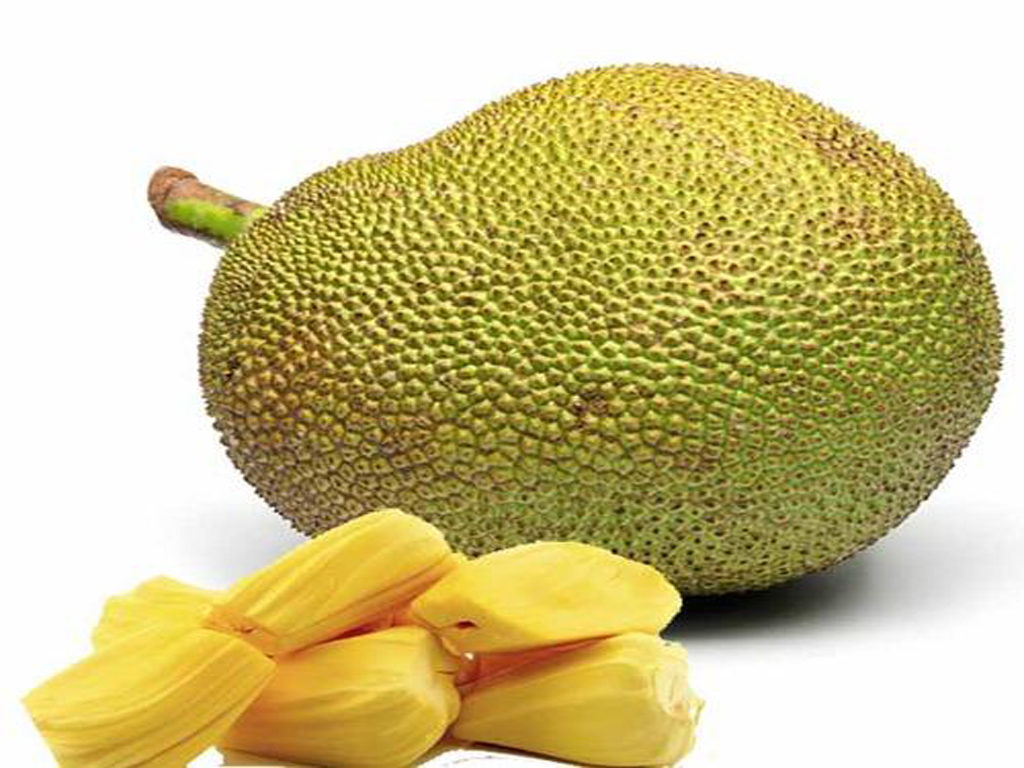
Jackfruit can be processed to taste like pulled pork
♣ Jackfruit is the new to-go meat substitute: “Jackfruit is a popular meat alternative already being used in place of items like barbecue pulled pork, according to the Whole Foods trend report. The fruit is native to Southeast Asia, and is also grown in parts of Africa and South America. Americans have been using it as a meat substitute for a few years now (thanks to a stringy texture that mimics pulled pork or beef), but 2019 will be the year that pulled jackfruit really takes off. It’s a good source of iron, calcium and B vitamins, and using it as a replacement for meat helps you cut calories and saturated fat from your diet. But it does have a a much lower protein content compared to meat, at 2.8 grams per serving versus around 21 grams.”
♣ Frozen treats made of avocado and hummus will take over freezers: “Banana soft serve is so 2016, and dairy-free ice-creams made with alternative milks are finally catching up to cream-based versions in both the flavor and texture departments, according to the Whole Foods trend report.
“This year, brands will take things a step further by experimenting with new ice cream bases like hummus, avocado, and tahini. The jury’s still out on whether avocado ice cream will hold up to the original, but go ahead and experiment with a few new dairy-free ice creams and see if any strike your fancy. Hummus is also being used in other desserts, but as they generally contain added sugar, they’re not exactly a health food, but they also pack fibre and protein that isn’t found in traditional dessert.”
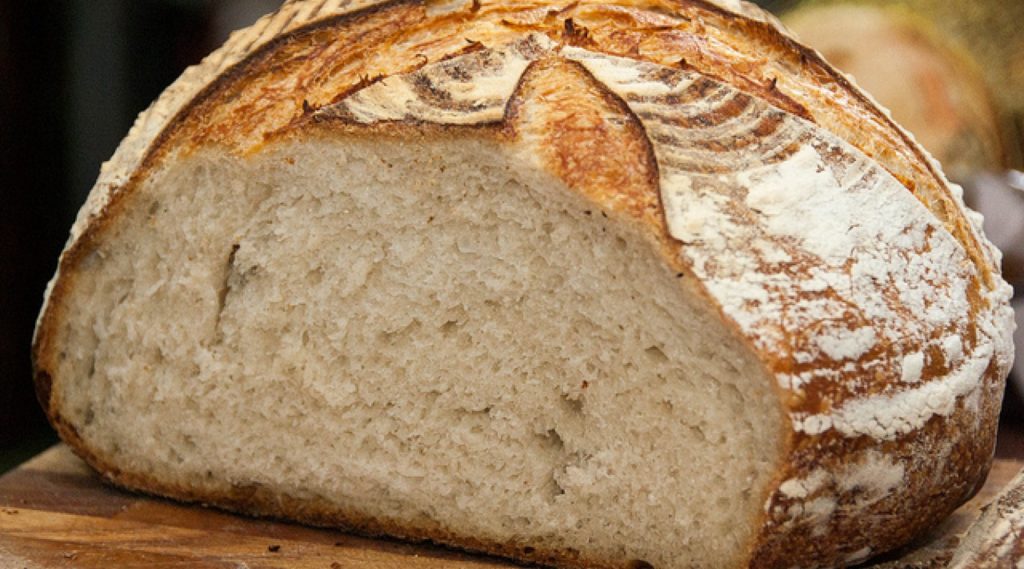
Learn how to make your own sourdough bread. Everyone else is doing it, baking that is
♣ Learn how bake your own bread – everyone else is: “Bread baking is on the rise, especially when it comes to fermented loaves like sourdough,” according to the Pinterest’s 100 top trends for 2019. People are increasingly interested in cooking more at home and baking bread can be a fun and delicious culinary experience. But it’s always okay to just buy your own loaf.
Artisanal bakers like Glenwood Bakery in, yes Glenwood, Durban, offers a range of healthy sourdough options using stone-ground flour, rye and spelt flour. If you are doing the baking yourself, however, mix things up by trying bread baked with a new grains like spelt or teff.
FROM BBC FOOD
♠ Rum: “Rum is coming up fast. Millenials are particularly partial to barrel-aged, small-batch craft rums, fine rums from traditional Caribbean makers. “Whether you like it strong or sweet, prefer the harshness of white spirit, or dark rum sipped neat with ice, or a golden rum and coke, it’s one of the most accessible spirits,” says Nicholas Robinson, food and drink editor at bar magazine, Morning Advertiser.

The food hall at The Market, Ballito Lifestyle Centre. Picture from their archives
♠ Food Halls: “Fittingly, given that it kick-started the craze for communal dining halls serviced by multiple kitchens, Altrincham Market House – which also runs the Mackie Mayor in Manchester – will open a third food hall in Macclesfield this year. In London, Market Halls are set to open Britain’s biggest on Oxford Street.”
Closer to home, the Ballito Lifestyle Centre is home to The Market, a one-stop restaurant and food hall where you can eat from a variety of restaurants (sitting at long communal tables), buy food to take home, or buy fresh produce, artisanal bread and home-grown meats.
♠ Age? No Barrier: “Waiting-on is usually a young whippersnappers’ game. But London restaurateurs Corbin & King plan to, at least, double the number of over-50s it employs to wait tables this year. With good front-of-house staff in short supply and Brexit looming, this could well become a ‘thing’.”
Wonder if Durban is ready for waitresses with grey hair, wrinkles and attitude?
♠ Sri Lankan cuisine: “Restaurants such as London’s Hoppers, mini chain The Coconut Tree and the success of the M&S Taste Asia range have put Sri Lankan food on the brink of a breakthrough. Think hoppers (bowl-shaped rice flour pancakes), kottu roti (fried veg, eggs, shredded roti and curry, as sold by street stall Kottu Lanka and pol sambol coconut relish.”
“Before, Sri Lankan was lumped in with Indian cuisine, but now it’s recognised in its own right,” says Emma Weinbren, food trends editor at retail magazine The Grocer.
FROM BERRIESANDSPICE.COM
♣ Georgian food: “Georgia (a country at the intersection of Europe and Asia and formerly part of the USSR) has become a very trendy travel destination, and its cuisine is about to take on new heights. Based around the use of nuts, herbs, vegetables and low intervention cooking, Georgian food can appeal to and please everyone. It is not only healthy and diverse, but it is affordable, quick and easy to prepare. And if you’ve already heard of their famous cheese bread, khachapuri, get ready to discover plenty of other fabulous dishes like their soups, walnut pastes and soup dumplings.”
FROM THE MICHELIN GUIDE
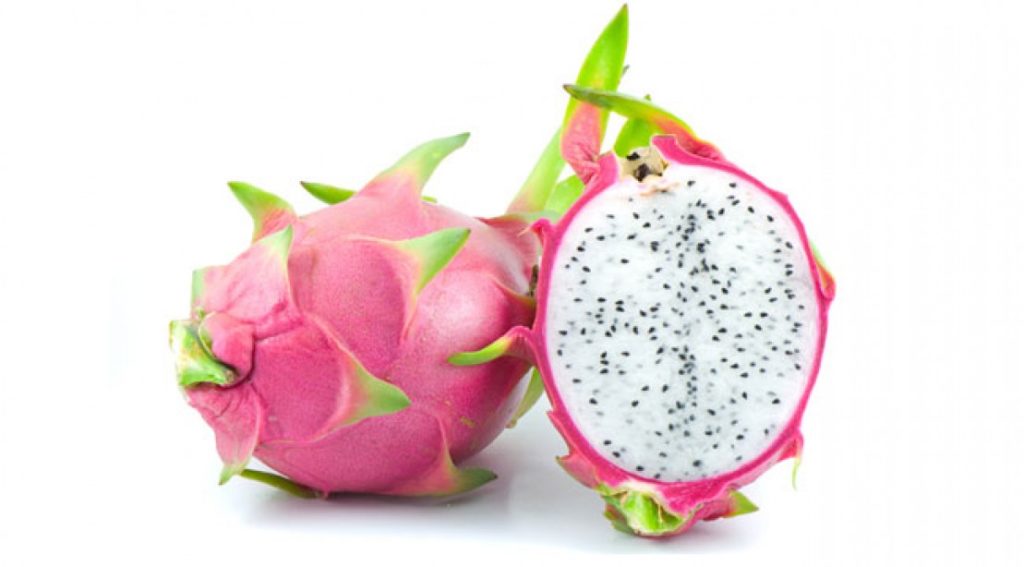
Goodbye apples, hello dragon fruit
♠ Pacific Rim Flavors: “The Pacific Rim region, made up of land spanning Oceania and Asia to the Americas that surrounds the rim of the Pacific, looks set to be the “it” region for culinary inspirations. Expect a delicious hodgepodge of ingredients from the fusion medley of cuisines. Think hints of French influences in a Hawaiian poke bowl or a mishmash of Vietnamese and Thai elements in a dish. Condiments can include dried shrimp, cuttlefish and shrimp paste, while aromatics and spices can range from cardamom to cinnamon, and lemongrass to saffron. Don’t be surprised to find fruit such as guava, dragon fruit and passion fruit in colorful smoothie bowls and cocktails. Instead of sugar, beverages can be sweetened with luo han guo, or monk fruit. Other examples of Pacific Rim dishes include seared fish with peanut coconut sauce, shiitake mushroom quesadillas and lamb tacos with a pineapple chutney.”
As I write this, Sun Sun Chinese Supermarket in Umhlanga Rocks Dive, Durban North, has dragonfruit on their shelves.
♠ Sea Snacks: “Instead of root vegetables like potato and tapioca, we will be turning to the ocean for snack inspiration. While paper-thin roasted seaweed strips were all the rage a few years ago, Whole Foods Market predicts that marine ingredients will show up in more food products in 2019. Examples include seaweed butter and kelp “noodles” that are made from the brown sea plant.
“More intriguing products include kelp jerky, a protein-rich snack that is mixed with mushrooms, and faux tuna produced from algae. Besides fried salmon skin, which is already popular in Asia, ingredients such as sea fennel and water lily seeds will find their way into the expanding pool of marine munchies.”
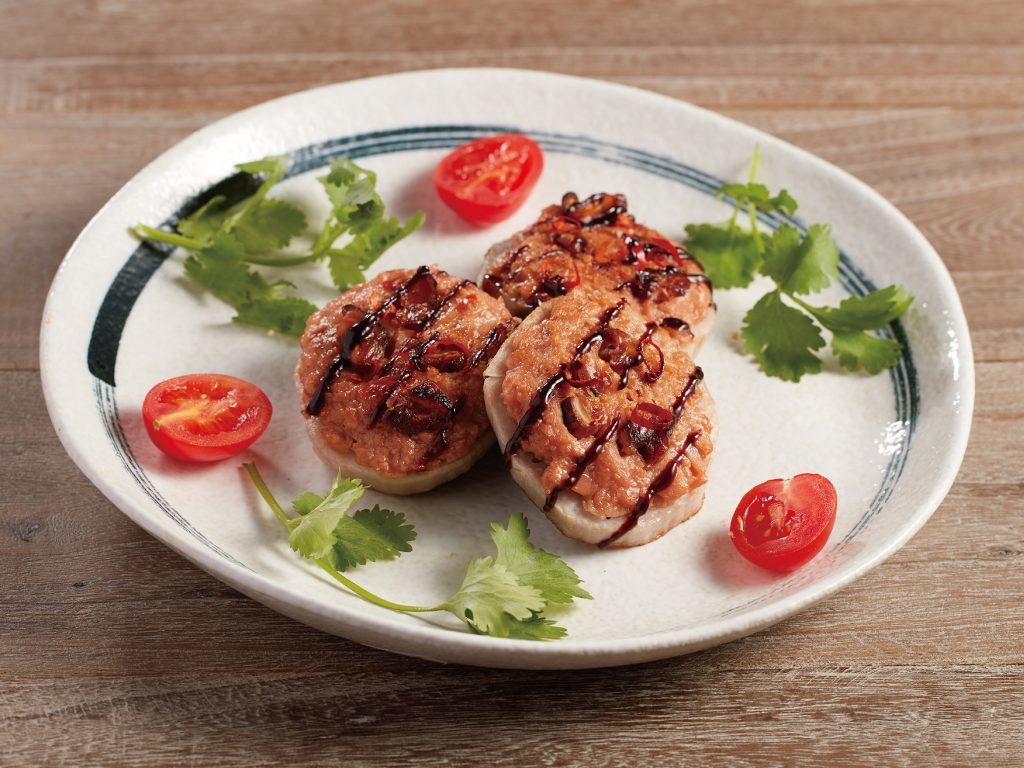
Omnipork, world’s first plant-based pork alternative
♠ Plant-Based Protein: “Plant-based has become a key dining buzz phrase recently, but those who are health-conscious may still hunker for meaty flavors and textures—no matter how much “meaty” eggplant and mushrooms are crammed into a dish. This is where plant-based protein alternatives come in.
“Silicon Valley start-up Impossible Foods is making “meat” from four natural ingredients: wheat protein, coconut oil, potato protein and heme. Heme raises some eyebrows as the iron-loaded molecule that is found in meat and plants, and gives off meat-like taste and aroma when cooked with amino acids and sugar. Nutrition-wise, the “meat” contains more protein and iron than a typical meat patty and has zero cholesterol. In Hong Kong, Omnipork, a plant-based protein that tastes and looks like pork, was rolled out last year. Omnipork is a blend of shiitake mushrooms, soy and pea proteins and rice. Los Angeles-based Beyond Meat produces meat patties that are mainly made from peas. Hailing from the United Kingdom is Quorn made from mycoprotein, a dough made from fermented fungus and is said to taste like chicken.”
♠ Home Sweet Home: “In” will be the new “out” when it comes to dining. According to a report by global food and hospitality consultancy Baum + Whitman, “more people will choose to eat at home than visit restaurants. This prediction can be attributed to surging food prices and restaurant bills.
“Cooking at home is becoming less intimidating and more hassle-free these days. Home cooks can turn to a growing variety of meal kits, which are pre-cooked or come as processed packs of ingredients complete with recipe sheets, and better quality of supermarket-packed food packages.”
♣ Middle East Magic: “The rise of the global village means food that was once thought of as exotic is now commonplace and celebrated and Middle Eastern cuisine certainly deserves its place in the sun. Star chefs like UK-based Yotam Ottolenghi are leading the charge, but expect to see more Lebanese and Turkish specialities on menus near you.”
Delicious Turkish food is already available at the Pavilion’s food court, Westville, called Sofra Istanbul.
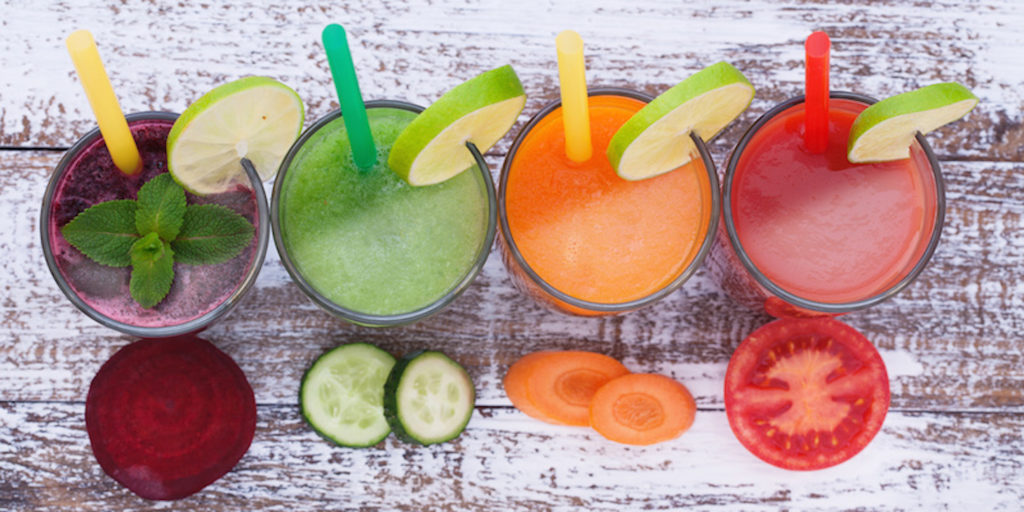
Fresh juice mix fruit, healthy drinks
Better-for-you beverages: “We’ve seen fruit and veggie juicing reach new heights over the past few years followed by the appearance of kombucha, the fermented tea ‘super-drink’. Other healthy beverages to look out for include metabolism-boosting matcha, cordials made with wild botanicals and a variety of drinks containing natural health-boosting ingredients such as turmeric, activated charcoal and collagen.”
FROM FORBES MAGAZINE:
And a local chef is already taking advantage of the culinary potential of marijuana. Today, February 10, the Sunday Times reports that a chef in Johannesburg, Joshua Lavack, is preparing a 5-star meal at a secret venue in Johannesburg in the coming week, which will focus on food marinated in and infused with cannabis oil. Levack reports that the food will be infused with a cannabis compound with medicinal properties that does not make diners feel stoned, as well as THC, a cannabinoid that will. No takeaways allowed, apparently. Haha. Super fun, I think.
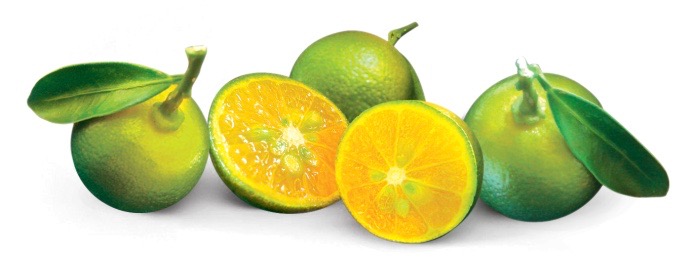
Calamansi, a lime native to the Philippines. It’s part of the new sour revolution
CHECK OUT
⊗ Also check out http://www.eatout.co.za/article/ahead-of-the-curve-food-trends-for-2019/
⊗And from eater.com. every food trend for 2019:
https://www.eater.com/2018/12/26/18139840/food-and-restaurant-trends-2019-prediction
⊗ wastED is a community of chefs, farmers, fishermen, distributors, processors, designers and retailers, working together to reconceive “waste” that occurs at every link in the food chain.
“Our goal is to celebrate what chefs do every day on their menus (and peasant cooking has done for thousands of years): creating something delicious out of the ignored or un-coveted and inspiring new applications in our food system.”